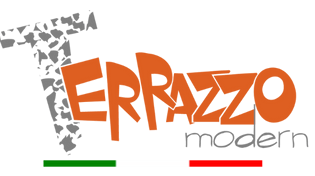Terrazzo is a flooring material that has been around for centuries. It is a composite material made up of chips of marble, glass, and other materials, embedded in a cement or resin base. This versatile and durable flooring has a long and interesting history, from its origins in ancient times to its resurgence in modern design.
- Origins of Terrazzo
The history of terrazzo dates back to ancient times. The Greeks, for example, used terrazzo to create decorative mosaics for their homes and public buildings. They used a mixture of lime and crushed marble to create intricate patterns and designs that were both beautiful and durable.
In ancient Rome, terrazzo was used to create durable and decorative floors for public buildings, bathhouses, and villas. These floors were made using a combination of lime, crushed marble, and water. The mixture was then poured onto the floor and smoothed out to create a flat surface. The surface was then polished to a high shine.
Terrazzo was also used in Islamic architecture during the 12th century. In the city of Mosul, Iraq, a palace was built using terrazzo. The palace's floor was made of terrazzo, and the walls were decorated with tiles and mosaics. This palace is a perfect example of the intricate and beautiful designs that can be created with terrazzo.
- Terrazzo in the Modern Era
The use of terrazzo declined during the Middle Ages but made a resurgence in the 18th century. Venetian workers in Italy discovered a way to use waste chips of marble and glass to create a low-cost flooring material. This innovation gave rise to the modern form of terrazzo, which is made by embedding chips of marble or glass in a cement or resin base.
In the 1920s and 1930s, terrazzo became a popular material in the United States. It was used in the construction of buildings such as the Lincoln Memorial and the Chrysler Building. Terrazzo was also used in the construction of airports, hospitals, and schools. It was an ideal material for high-traffic areas because of its durability and ease of maintenance.
During the mid-20th century, terrazzo fell out of favor as other flooring materials, such as vinyl and carpet, gained popularity. However, in recent years, terrazzo has made a comeback in the world of interior design. Designers and architects are rediscovering the beauty and versatility of terrazzo.

- The Resurgence of Terrazzo
Terrazzo has been making a comeback in recent years, thanks to its durability, versatility, and aesthetic appeal. Designers and architects are using terrazzo in a variety of ways, from flooring and countertops to furniture and accessories.
One reason for the resurgence of terrazzo is the availability of new materials and technology. Today, terrazzo can be made using a wide range of materials, including glass, metal, and even recycled materials. Advances in technology have also made it easier to create intricate and complex designs with terrazzo.
Another reason for the resurgence of terrazzo is the growing interest in sustainable and environmentally friendly materials. Terrazzo is a sustainable material because it can be made using recycled materials. It is also durable, which means it has a long lifespan and does not need to be replaced as often as other materials.
Terrazzo is also a material that can be customized to suit a wide range of design styles. It can be made in various colors and patterns and can be used to create modern and traditional designs. Terrazzo is a versatile material that can be used in a variety of settings, from residential homes to commercial buildings.

- Conclusion
The history of terrazzo is a long and interesting one. From its origins in ancient Greece and Rome to its resurgence in modern design, terrazzo has proven to be a durable and versatile flooring material. With the availability

